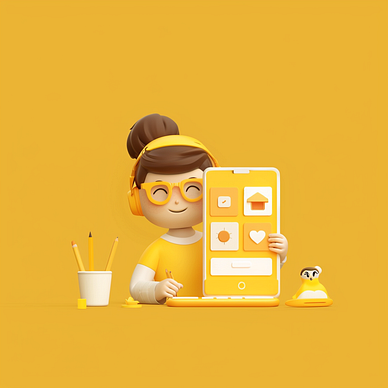The UX/UI Chronicles: General Introduction to UX/UI Design
Between aesthetics and function
Have you ever used an app that was so intuitive you wondered how you ever lived without it? Or have you ever come across an app that was so pretty you wanted to hang it in a frame on the wall? If so, then you’ve experienced the magical work of UX (user experience) and UI (user interface) design, the chronically underrated and unassuming heroes behind every successful mobile application.
The magic of UX and UI
So, what’s the difference between UX and UI? I know it’s a bit confusing for beginners, but let me break it down: UX (User Experience) design ensures a seamless and enjoyable interaction between the user and the application. It lays the foundation for users to intuitively find their way around and efficiently achieve their goals without having to fight their way through complicated menus. The aim of UX is to ensure that the application is not only usable, but also useful and ergonomically designed. UI is the visual part of the app. It’s about making sure that every button, menu and page not only works seamlessly, but also looks good and entices the user to use it through appearance alone. It is the art of making the functional side of your app look in a way that not only appeals to the user, but also visually takes them by the hand and guides them through the app.
Insight into the design process
The design process is comparable to methodical experimentation in which ideas are tested for their practicability, prototypes are developed and then continuously optimised. This cyclical process of designing, testing and adapting aims to create a product that is both functional and aesthetically pleasing.
The importance of user research and usability tests
Now that we’re taking the cliché “the customer is king” to a whole new level: User research and usability testing are the bread and butter of UX/UI design. Through surveys, interviews and observations, designers can delve into the minds of their users and understand what they really want and need. Usability testing then shines a spotlight on everything that stands between the user and a perfect app experience and allows them to be eliminated.
Software tools
Figma is my personal favourite and is at the heart of modern design software, offering an extensive range of features that enable designers to create visually appealing and functional user interfaces. Its strengths lie in its flexibility and ability to collaborate, which has established it as an indispensable tool for UX/UI designers. For anyone who wants to learn UX/UI design, I recommend familiarising yourself with Figma (I have selected a suitable playlist for you and linked it for you). There is other software out there, but Figma and me? That’s true love.
To summarise, UX/UI design is crucial to the success of any mobile application. A deep understanding of user needs paired with a methodical design approach leads to apps that not only work, but are also a joy to use. Or to put it in my words:
Make your app pretty and practical, then it is more likely to be successful.
You can find the other articles in the UX/UI Chronicles series here:



If you liked this article, don’t hesitate to applaud and share it. If you would like to share your own experiences with me, I look forward to your comments and if you don’t want to miss my other articles, feel free to follow me.
